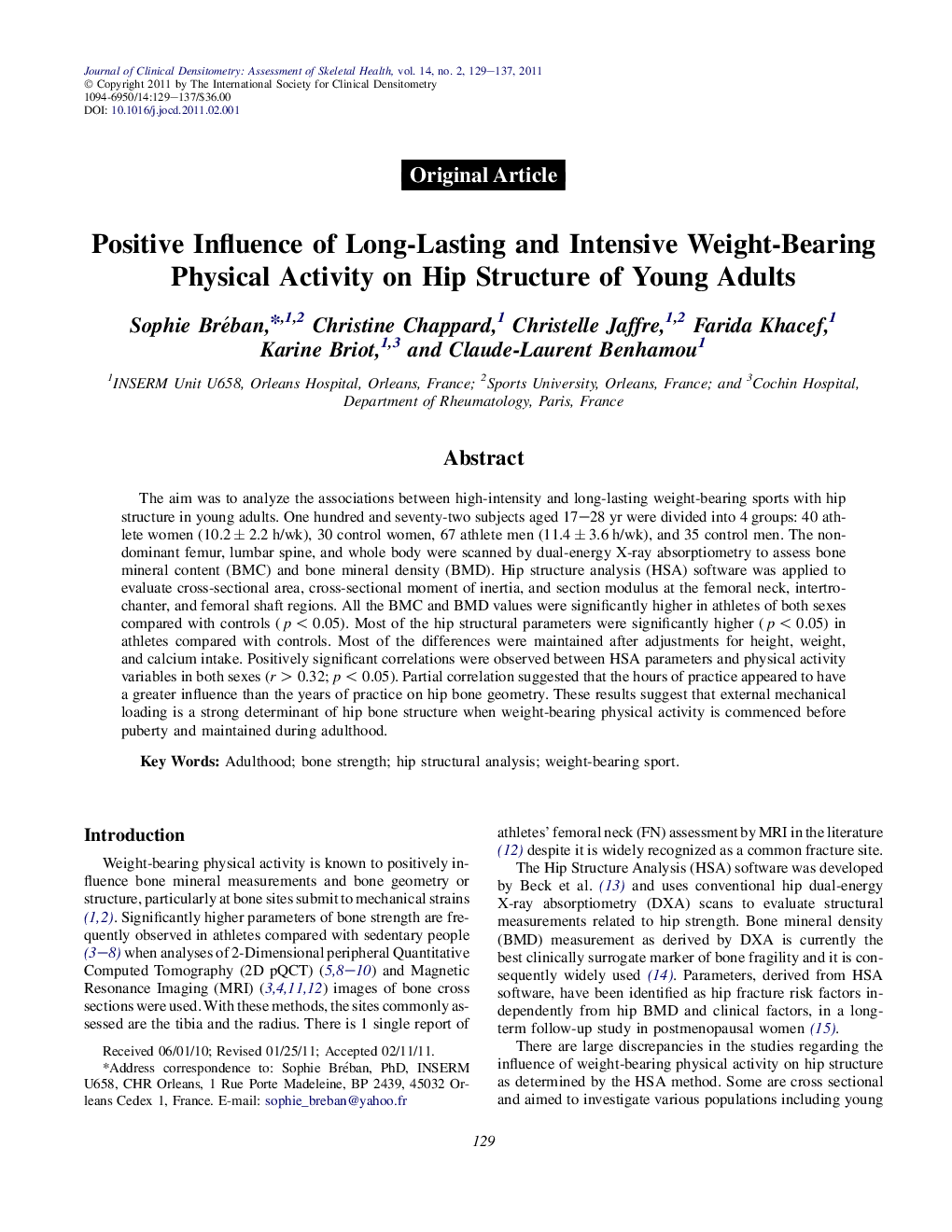| Article ID | Journal | Published Year | Pages | File Type |
|---|---|---|---|---|
| 3271479 | Journal of Clinical Densitometry | 2011 | 9 Pages |
Abstract
The aim was to analyze the associations between high-intensity and long-lasting weight-bearing sports with hip structure in young adults. One hundred and seventy-two subjects aged 17-28 yr were divided into 4 groups: 40 athlete women (10.2 ± 2.2 h/wk), 30 control women, 67 athlete men (11.4 ± 3.6 h/wk), and 35 control men. The nondominant femur, lumbar spine, and whole body were scanned by dual-energy X-ray absorptiometry to assess bone mineral content (BMC) and bone mineral density (BMD). Hip structure analysis (HSA) software was applied to evaluate cross-sectional area, cross-sectional moment of inertia, and section modulus at the femoral neck, intertrochanter, and femoral shaft regions. All the BMC and BMD values were significantly higher in athletes of both sexes compared with controls (p < 0.05). Most of the hip structural parameters were significantly higher (p < 0.05) in athletes compared with controls. Most of the differences were maintained after adjustments for height, weight, and calcium intake. Positively significant correlations were observed between HSA parameters and physical activity variables in both sexes (r > 0.32; p < 0.05). Partial correlation suggested that the hours of practice appeared to have a greater influence than the years of practice on hip bone geometry. These results suggest that external mechanical loading is a strong determinant of hip bone structure when weight-bearing physical activity is commenced before puberty and maintained during adulthood.
Related Topics
Health Sciences
Medicine and Dentistry
Endocrinology, Diabetes and Metabolism
Authors
Sophie Bréban, Christine Chappard, Christelle Jaffre, Farida Khacef, Karine Briot, Claude-Laurent Benhamou,
